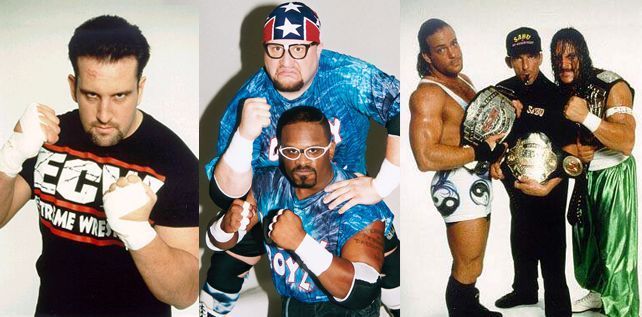
5 ways ECW's influence is felt today in wrestling

Hardcore, Extreme and Violence are three words that described what one promotion in Philadelphia did over twenty years ago, one that is still fondly remembered today. Owned and operated by the current advocate of Brock Lesnar, Paul Heyman, he did everything he could to make ECW unlike anything else that fans had seen in wrestling.
There were women engaging in catfights, rolling around in next to nothing, and there was the homicidal, suicidal, genocidal Sabu battling time and time again and suffering brutal injuries like a broken neck. ECW was unlike anything else on television.
While WCW and WWE recognized that they had to change with the times in order to have their product stand out, ECW had the foresight and vision to do things before others even considered them.
Men like Bubba Ray and D-Von Dudley and Tommy Dreamer were mainstays in the company and committed themselves to ensuring it succeeded one way or another. What exactly did ECW do that changed the landscape of wrestling? Here are five ways ECW's influence is felt today in wrestling.
#5 Lucha Libre

For years, Luchadors in Mexico were seen as not just athletes, but heroes, there to protect the people. The Lucha Libre form of wrestling has for a long time been a huge success in the country. So, linked to its native culture, it may have been difficult for fans outside Mexico to connect with it, but that didn't mean the style could never be a success in North America.
Paul Heyman wanted to be the alternative to what was on screen in other promotions, and to that end, he first brought in Konnan to present a different style of wrestling to the North American audience.
Konnan's look and style translated well, but Heyman didn't stop there. He also brought in the likes of Rey Mysterio and Psicosis, showing fans just what true risk-taking and death-defying wrestling can look like. While it may have been created and established in Mexico, it was ECW that helped bring it to the forefront in the U.S.